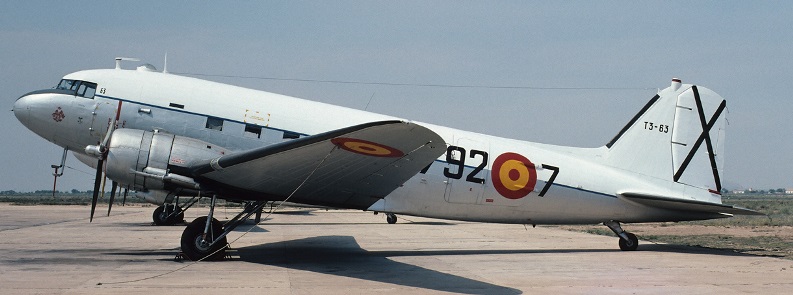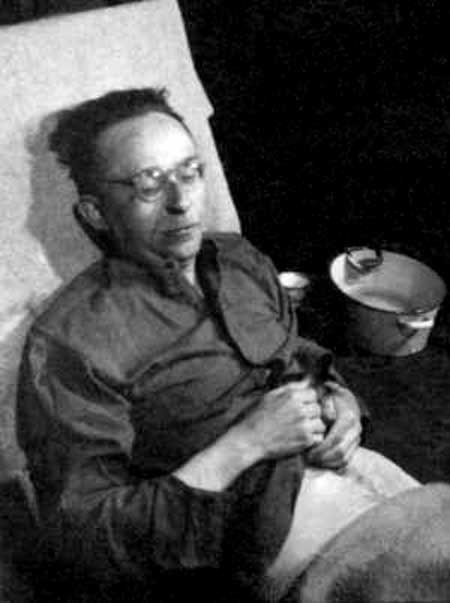 As I have already mentioned, this statement made sense only if the whole thing was a deception. Had Himmler wanted to avoid capture, he would have chosen a totally different escape route (and procedure) and equipped himself and his entourage with far more appropriate documents.
As I have already mentioned, this statement made sense only if the whole thing was a deception. Had Himmler wanted to avoid capture, he would have chosen a totally different escape route (and procedure) and equipped himself and his entourage with far more appropriate documents.
Had he wanted to surrender to the Allies and be taken to their Supreme Command, he would have done it openly and officially – by simply waiting for them in Flensburg. Had he wanted to commit suicide (which he vowed to never do), he would have done it openly and publicly (again, in Flensburg).
Selvester informed the headquarters of the British Second Army at Lüneburg of his captive, and Major Rice, an Intelligence staff officer, was dispatched to confirm the prisoner’s identity. Meanwhile, Selvester carried out a body search of his captive (or so he told his superiors).
He ordered the latter to strip naked and as each item of clothing came off he examined and handed it to a sergeant, who examined it again. Selvester later stated in his report:
ll the orifices of his body were searched, also his hair combed, and any likely hiding place examined. At this stage he was not asked to open his mouth, as I considered that if the vial were hidden in his mouth and we tried to remove it, it might precipitate some action that would be regretted.
I think it was a blatant lie. In reality, Selvester surmised that if Himmler decided to reveal his identity to the Allied officers, he wants to surrender and probably to negotiate some kind of deal, given the information and other assets that he had.
Consequently, the risk of him committing suicide by self-poisoning was pretty much nil – hence there was no need for time-consuming (and very much insulting and humiliating) whole body search.
In fact, the latter could have triggered a radical change of mind in Himmler – and made him commit suicide by biting on a vial (if it was, indeed, hidden in his mouth). Hence, the decision not to search the prisoner was the right one under the circumstances… but only if the latter was, indeed, Heinrich Himmler.
Then Selvester made another totally appropriate decision – he his prisoner with “thick cheese sandwiches and tea”. Had Himmler hidden a poison vial in his mouth, he had to somehow take it out – which would have been immediately noticed by Selvester or his sergeant.
After sandwiches and tea, “Himmler” was allowed to shave (the fact made evident by post-mortem photos and the previous report which stated that prior to identifying himself as Himmler, “Sgt. Heinrich Hi[t]zinger had several days’ growth of beard”.
Himmler’s self-identification was very important, of course, but (like in any criminal investigation – and SS-Reichsfuhrer was obviously a major criminal) the British need an independent confirmation of his identity. Hence, the mission of Major Rice and his team was ‘to establish the identity of Himmler beyond all reasonable doubt’.
They failed – and failed miserably. First, they had preciously little (almost nothing) for comparison. No dental records, no fingerprints – and the DNA will be described only eight years later (and used for identification 43 years later).
All they had were a snapshot that showed just one ear, a two-paragraph summary of his career, his Nazi Party number, his SS number, his date of birth, and a specimen signature.
Although ears can be (and are used) for identification purposes, in 1945 it was a highly unreliable method. Even when you have two ears for comparison and even when you employ a highly skilled ear shaped analyst (the British in 1945 had neither).
Actually, the first sufficiently reliable system for the use of the outer ear for identification purposes was developed only in 1963 – almost 20 years after the Lüneburg incident.
Consequently, the claim of the interrogation team that the ear of the prisoner was found to be identical with the one [partly] visible in the photograph was wishful thinking at best (they really wanted their guy to be Himmler because it meant fame, promotion, decorations, etc.) and a blatant lie to their superiors (and to the whole world) at worst.
The results of the interrogation of their captive proved to be even more discouraging. When asked to give his Nazi Party number, the prisoner replied that ‘it was in the 14,000 series’.
The number given on the SHAEF (Supreme Headquarters Allied Expeditionary Force) card was 14,303, so the reply was not, strictly speaking, inaccurate. However, every officer of every military and every paramilitary force in the world is drilled to recite this number by heart any time – day and night in any condition.
Besides, Himmler had a phenomenal memory and an obsession with detail (especially his personal details). So it is simply inconceivable that he would forget this number – one of the two most fundamental numbers in his life (the second being his SS number).
Which he had the same problem remembering: when asked about it, he answered “it was 169 or thereabouts”. It was both impossibly (for the real Himmler) vague and no less impossibly wrong – his real SS number was 168.
The only rational explanation is that his impostor was chosen not because of his memory (which probably was quite faulty), but for his physical resemblance to Himmler. Hence, under a severe stress (he was hours away from taking his own life and under a hard-pressed interrogation), his memory slipped. Happens all the time.
To complete his examination, Rice asked the man for a signature, and the prisoner gave one, only on condition that it was instantly destroyed (which pretty much gives away the whole deception game). The interrogators had no choice but to agree, and “Himmler” duly signed his name. Major Rice, driven by the overwhelming which that his prisoner was, indeed, Heinrich Himmler rather than relying on expert analytical technique (he was no handwriting expert), decided that the new signature corresponded well enough with then one they had on the card.
As soon as the question of identity was settled (or so it seemed), another message was sent to the headquarters in Lüneburg, whence Colonel Michael Murphy, Chief of Intelligence in the Second Army, set off to take charge of the prisoner.
That evening he was unwell (to put it mildly), suffering from a severe stomach problem thanks to the excessive celebrations for the end of the war. Which made his behavior towards the prisoner… quite nasty.
Presented with Rice’s findings, Murphy ordered the prisoner to strip for a second search (he was not aware of the fact that there was no strip search) and put on fresh clothes.
Initially, the man refused to do either,. Threatened with forcible stripping, he did eventually undress, but still refused the battledress (because it was the uniform of his enemies), and after the search dressed himself again in a grey shirt, underpants and socks. His uniform was taken away, and he was given an army blanket to wrap around his shoulders.
Although this search also failed to reveal the missing phial, Murphy felt it was still possible for the man to have a poison capsule hidden about him, ‘the most obvious places being the mouth and buttocks’.
So he decided to conduct a thorough medical search – which meant that they had to take the prisoner to a doctor. In fact, he was taken to local police HQ to be examined by one Army Captain Clement Wells – a former general practitioner.
As the headquarters had already lost one important Nazi prisoner – General Pruetzmann, who had committed suicide – Sergeant Major Austin asked Colonel Murphy for permission to sandbag the man to render him unconscious – just in case. Murphy refused with a slight shake of the head, but still warned Wells that he feared a phial of poison was concealed somewhere on the prisoner’s body.
As the doctor looked into the suspect’s mouth for the first time, he thought he saw a gleam of a dark, silvery object. The sergeant held the light higher so that he could see better into the back of the mouth.
‘Open your mouth,’ he ordered. Instead of complying, the prisoner panicked, bit down hard, and instantly keeled over. At once Murphy shouted for a needle and cotton, with which he transfixed the prisoner’s tongue, pulling it forward while the doctor sloshed a basin of water into the moribund man’s mouth. Already he had turned pale green, and despite attempts at artificial respiration he died at 11.14 p.m. on May 23rd, 1945.
Such is the “gospel according to the Army”. The “gospel according to W. Hugh Thomas” is quite different. However, it does not really matter (although it is different, it is not different enough to provide any really valuable knowledge).
What does matter is whether there were any attempts to perform any post-mortem identification of the body. According to the official “gospel” (seconded by W. Hugh Thomas), neither fingerprints, nor dental impressions were taken.
I think it was not the case. At the time, British intelligence was the best in the world (by far) and employed the best minds the United Kingdom could offer. So it is simply inconceivable that (1) the body was buried without the permission from the very top; and (2) that no identification attempts were made.
I think that both the fingerprints and the dental impressions (and X-rays) were taken; that the ones belonging to the real Himmler have been found (at least fingerprints that could have been lifted from quite a number of places), that they were compared with those of the deceased… and that they did not match.
I am confident that within weeks (if not days) after the suicide of “Heinrich Himmler” the British intelligence knew for a fact that the deceased was NOT Heinrich Luitpold Hitler.
Actually, there is a lot of circumstantial evidence that the British suspected it from Day One. First, they had not shown the body to Himmler’s brother Gebhard for identification.
Nor (which is even more telling) to Himmler’s mistress Hedwig Potthas, who, like Gebhard, were in American custody. And – even more tellingly – when the members of the press were taken to view the body, their cameras were confiscated and they were only allowed to look at it from the doorway (which, however, did not prevent pictures from being taken by other individuals).
However, most of these pictures were confiscated by the authorities; the only ones that have been made available to the public are those taken at disadvantageous angles and from a distance, limited tools for identification.
In fact, I am confident that the only reason why the body was buried just three days later and with maximum possible secrecy (and why the Military Board of Inquiry – a standard procedure in such cases – was not convened) was that by that time the British were already almost 100% certain that they were dealing with the impersonator, not with the real Heinrich Himmler.
Someone at the very top (i.e., then Prime Minister Clement Attlee and/or the military top brass) was still unconvinced and ordered a new investigation (complete with exhumation, autopsy, etc.).
Which predictably produced the same results… after which the body was probably destroyed completely (just in case) – as were all relevant documents and evidence (fingerprints, dental records – everything).
So even if whatever is still top secret is declassified in 2045 (and it is a big IF), there will be nothing there that would prove that the individual who identified himself as Heinrich Himmler on May 22nd, 1945 while in British custody was, in fact, his impersonator.
Why didn’t they go after him in full force? Well, for one, someone has already leaked to the press the fact of the suicide of someone claiming to be Heinrich Himmler.
Someone who was far too confident that the identity of the deceased was established without a shadow of the doubt (while in reality it wasn’t). A typical blunder of a military bureaucracy – happens much more frequently than you might think.
Publically backtracking – i.e. stating “Sorry, we got it wrong – it was not Himmler” was politically impossible. Besides, SS Reichsfuhrer had enough dirt on far too many far too powerful people on the both sides of the Atlantic (and very likely made it known to the right people in no uncertain terms).
And, finally, the Cold War was just around the corner and Himmler (and his ODESSA) were now the allies of the West, not an adversary. So the whole thing was buried (some of it literally) and forgotten. And will definitely stay buried and forgotten – unless Die Neue SS decides to go public with irrefutable evidence of what really happened.
Fortunately for the British (for all Allies, in fact), in May and June 1945 the free world’s media had enough to report as war continued in the Far East, and Soviet forces occupied Eastern Europe.
Nobody – neither the press nor the population seemed to have the energy or the inclination to question Himmler’s death – they had far more interesting stories to tell (and read).
However, there is still some pretty strong photographic evidence that contradicts the official version (that the individual who committed suicide on May 23rd, 1945 was Heinrich Himmler).
The surviving drawings, photographs and film all powerfully illustrate a classic congenital abnormality, the reason for the deviation of the nose. Such cases of facial asymmetry are very common.
This condition results from an unequal amount of tissue on the sides of the face in late embryonic development before those tissues fuse to create nose and lips. Consequently, the developing child shows a discernible facial imbalance that is obvious in early childhood, usually getting less, but sometimes more obvious as they age.
A deviation of the nose dating from childhood causes a disparity in the nostrils, and exactly such a flattened area on top of the larger nostril, as nature tries in vain to correctly align the tissues.
All the evidence agrees that the man who lay dead in 31a Ülzenerstrasse had a noticeably (and naturally as there was no sign of physical injuries) asymmetrical face with a skewed nose (a finding confirmed by the doctors who did the autopsy) – a condition that Heinrich Himmler definitely did not have. Unlike the corpse of the deceased, Heinrich Himmler had an unusually even face, with no evidence of any facial skew.
Another piece of physical evidence that supports the deception theory is the scar (just one scar found during the autopsy) on the body of the deceased, oval-shaped and one inch by half an inch, on the upper inner border of the right kneecap.
The description places it slightly too high for the customary surgical scar that accompanied removal of knee joint cartilage. The scar could feasibly have resulted from such an operation, although it is more probable it was caused by trauma.
And that presented a major problem for the official version. Himmler was never recorded as having sustained any trauma to his knee. Never.
Still another piece of physical evidence that delivered a heavy blow to the official version was… the moustache. Himmler was supposed to have shaved off his moustache prior to heading off south on or around 10 May. When a moustache is shaved off after many years it leaves a paler area of skin.
No such patch is visible on the photographs of the corpse. Neither was it recorded in the post-mortem report, nor recalled by Browne who should have noticed it during his dental examination.
The legs of the corpse were also quite telling. They were muscular – which contrasted markedly with the supposedly frail physique of the Reichsführer. Schellenberg described his master as a ‘stork in a lily pond’ because of his spindly legs. Albert Speer laughed when asked whether Himmler’s legs were muscular, replying with confidence ‘Not at all – the very opposite’.
On 20 June 1943 an attempt on Himmler’s life resulted in a superficial flesh wound in his upper right arm; however, such wound always leaves a scar. However, the autopsy report mentions no such scar, which he should have found in the area he was carefully searching for needle pricks (the deltoid muscle was the usual site for intra-muscular injection in 1940s British practice).
Heinrich Himmler was widely known to have sustained a facial wound during his university days, a dueling scar that was the essential “badge of courage” for members of the fencing fraternity.
Himmler’s diary states that he required five stitches and one ligature or tie – a surgical procedure that always leaves a very specific kind of scar. Existence of this scar was confirmed by many individuals who knew Himmler personally… however, no scar was found during the autopsy.
When one of the doctors who performed the first autopsy on the body of “Himmler” – Lieutenant-Colonel Browne was asked whether he had seen any facial scar, he replied :
‘Absolutely not, I can absolutely guarantee that there was no facial scar, we were looking very carefully for anything like that.’
In short, there was no facial scar on the corpse of ‘Heinrich Hitzinger’. There was also a problem with teeth. A big problem. A very big problem. Kathé Heusermann, the assistant of Professor (and SS-Brigadeführer) Hugo Blaschke, who was Himmler’s dentist, recalled that SS-Reichsfuhrer had a whole set of unusually white and healthy teeth. All 32 of them.
The body of ‘Heinrich Hitzinger’ had only 27 teeth – and several gold caps. Himmler had none of the latter. When shown a photocopy of dental diagram developed during the autopsy and asked whether this could possibly have been Himmler’s dentition, she immediately replied with great certainty, ‘No.’ Asked to explain, she pointed at the gold cap, dead tooth and fillings – which she stated were definitely incorrect.
From the forensics perspective, “all of the above” can mean only one thing. Heinrich Himmler can not be declared dead on the basis of forensic evidence that would not satisfy a county coroner’s court (and it doesn’t).

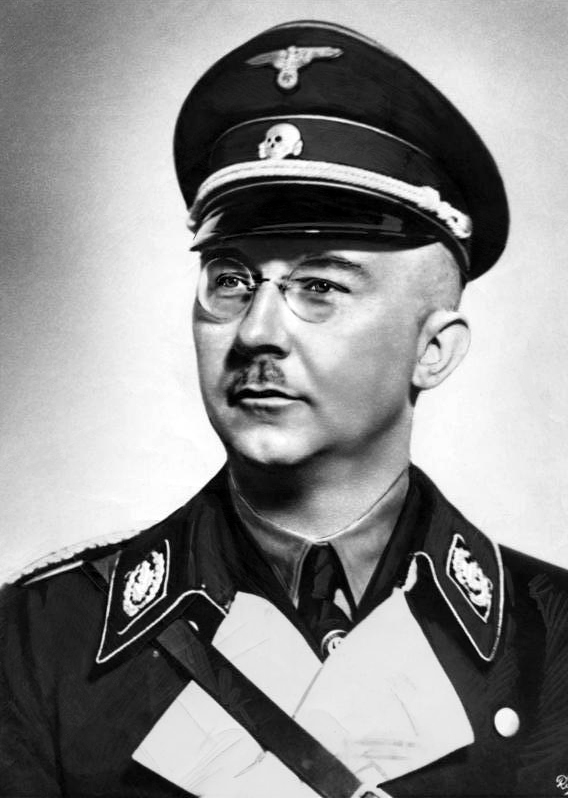 October 7th, 1900. Heinrich Himmler is born in Munich, Bavaria. Like Adolf Hitler, he attended the Catholic Church of Saint Michael the Archangel (commander-in-chief of God’s Armed Forces) – only in German Munich, not Austrian Leonding.
October 7th, 1900. Heinrich Himmler is born in Munich, Bavaria. Like Adolf Hitler, he attended the Catholic Church of Saint Michael the Archangel (commander-in-chief of God’s Armed Forces) – only in German Munich, not Austrian Leonding.
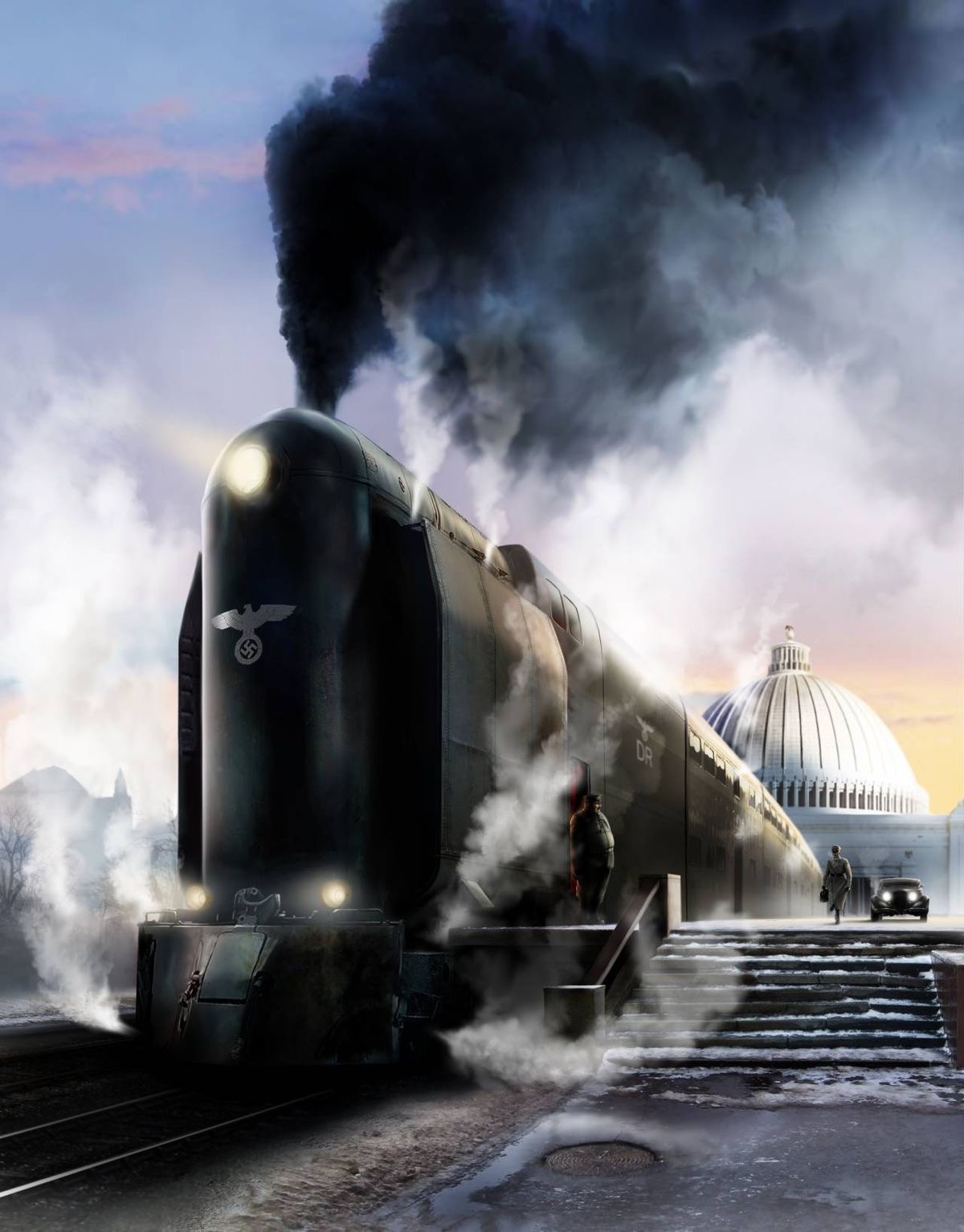
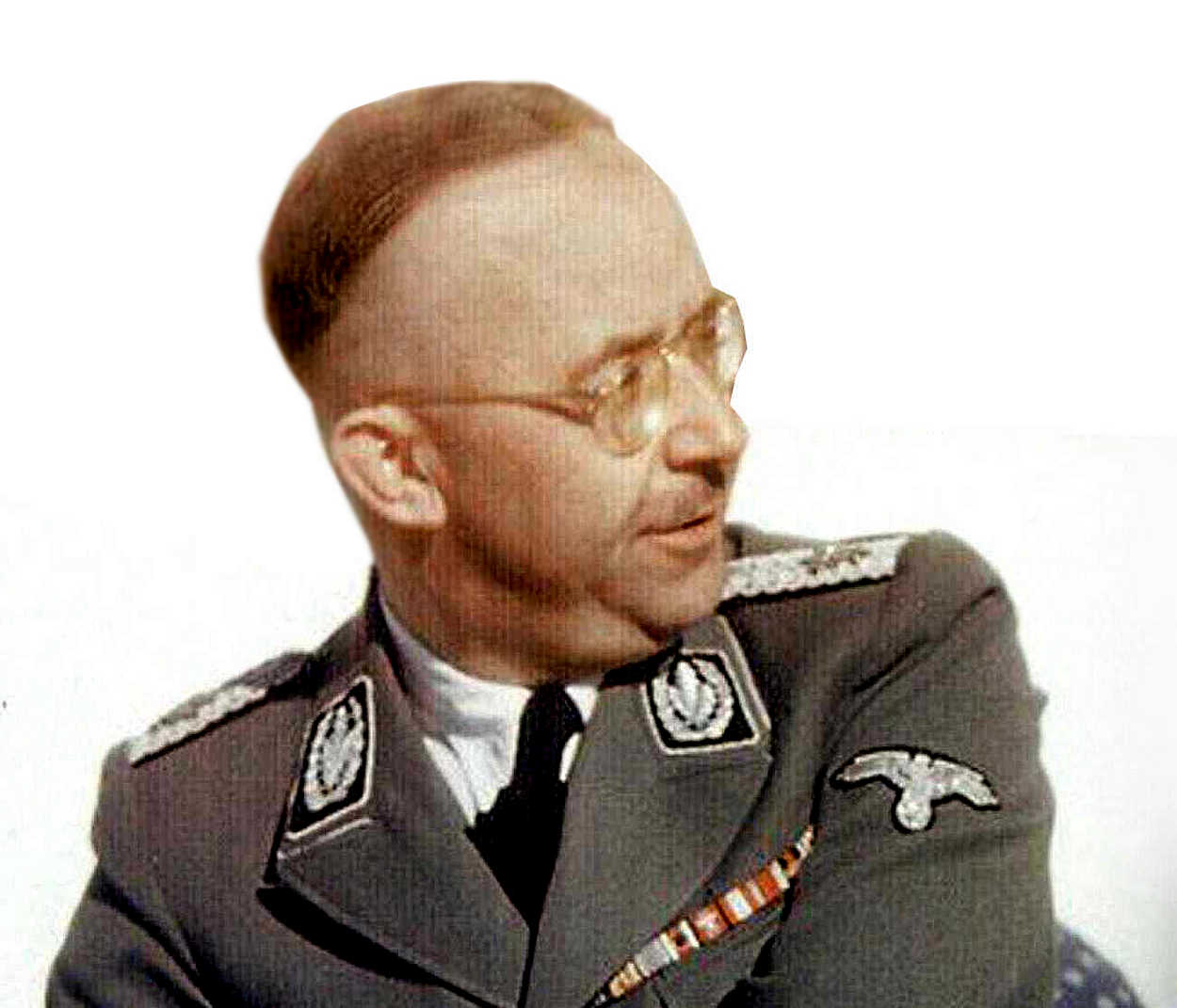 As I have already mentioned, SS-Reichsfuhrer had at least one personal agent inside the coup – one Hans Bernd Gisevius. Consequently, he knew everything he needed to know about the Oster/Halder conspiracy in 1938… and in 1941 (we are in the realm of alternate history here).
As I have already mentioned, SS-Reichsfuhrer had at least one personal agent inside the coup – one Hans Bernd Gisevius. Consequently, he knew everything he needed to know about the Oster/Halder conspiracy in 1938… and in 1941 (we are in the realm of alternate history here).
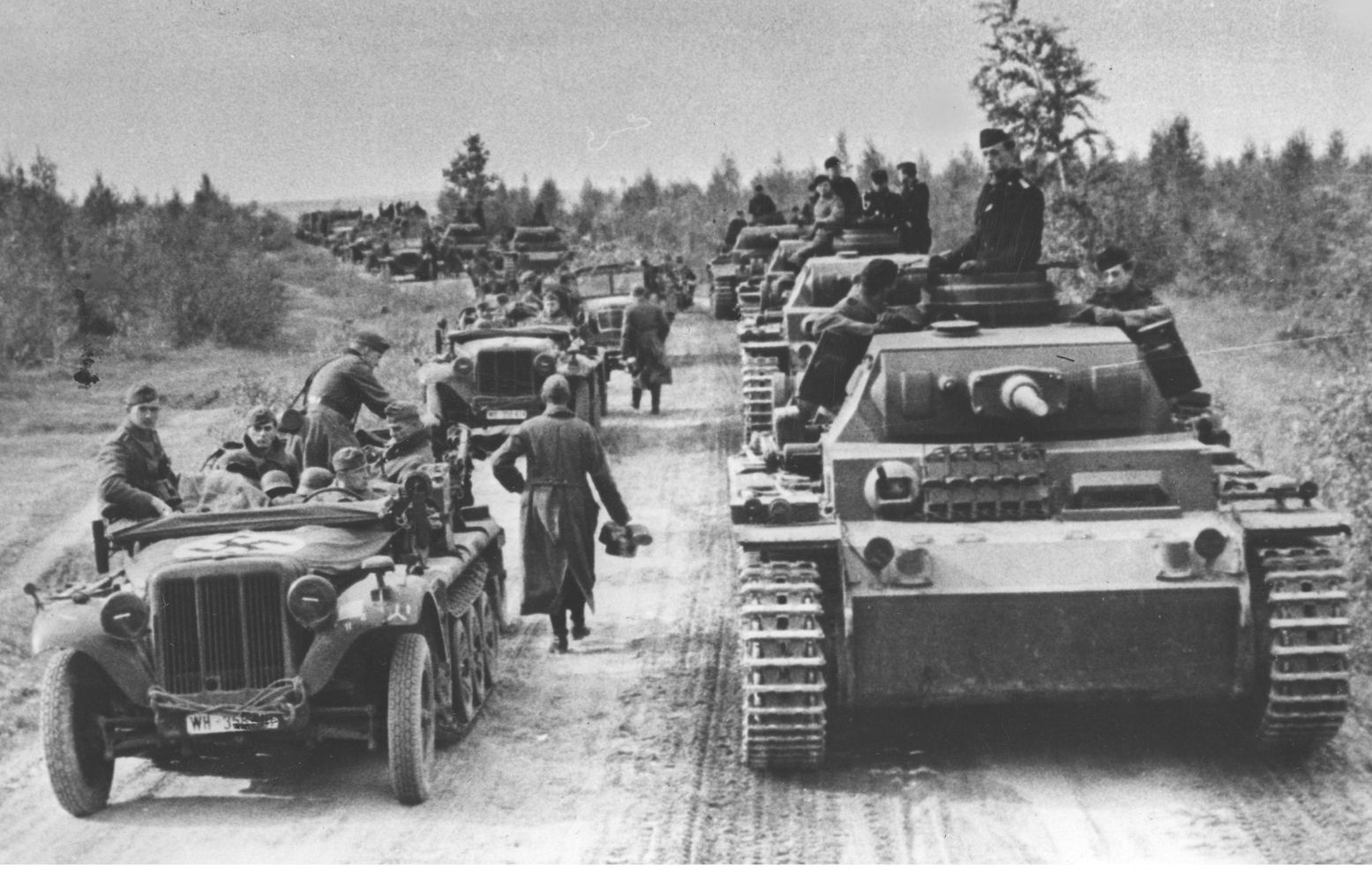
 As I have already mentioned, this statement made sense only if the whole thing was a deception. Had Himmler wanted to avoid capture, he would have chosen a totally different escape route (and procedure) and equipped himself and his entourage with far more appropriate documents.
As I have already mentioned, this statement made sense only if the whole thing was a deception. Had Himmler wanted to avoid capture, he would have chosen a totally different escape route (and procedure) and equipped himself and his entourage with far more appropriate documents.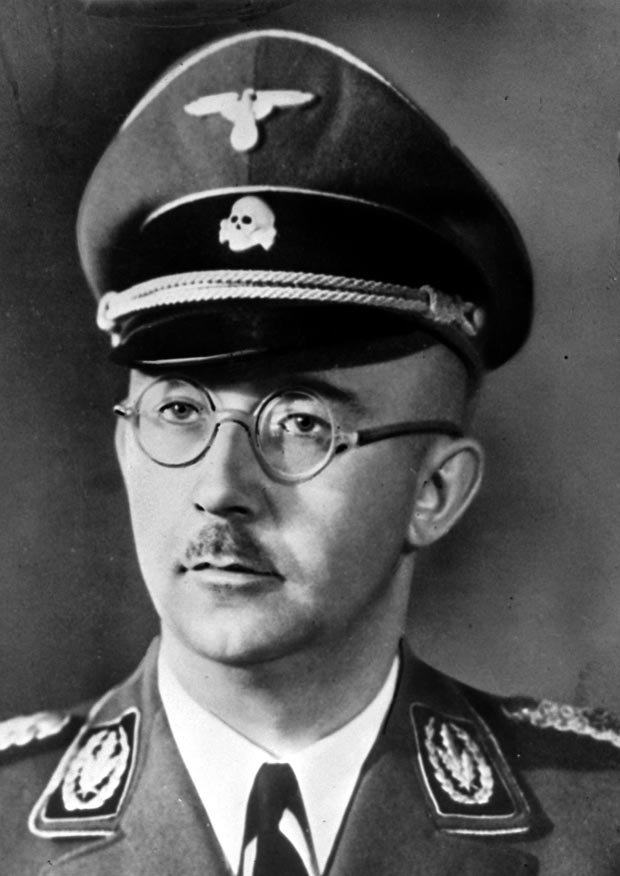 Almost nothing is known about the name on the ID that this man used as a cover (other than that he was known to bear a remarkable resemblance to Heinrich Himmler – to such an extent that he was almost his double/twin). He also had the same first name which certainly helped.
Almost nothing is known about the name on the ID that this man used as a cover (other than that he was known to bear a remarkable resemblance to Heinrich Himmler – to such an extent that he was almost his double/twin). He also had the same first name which certainly helped.